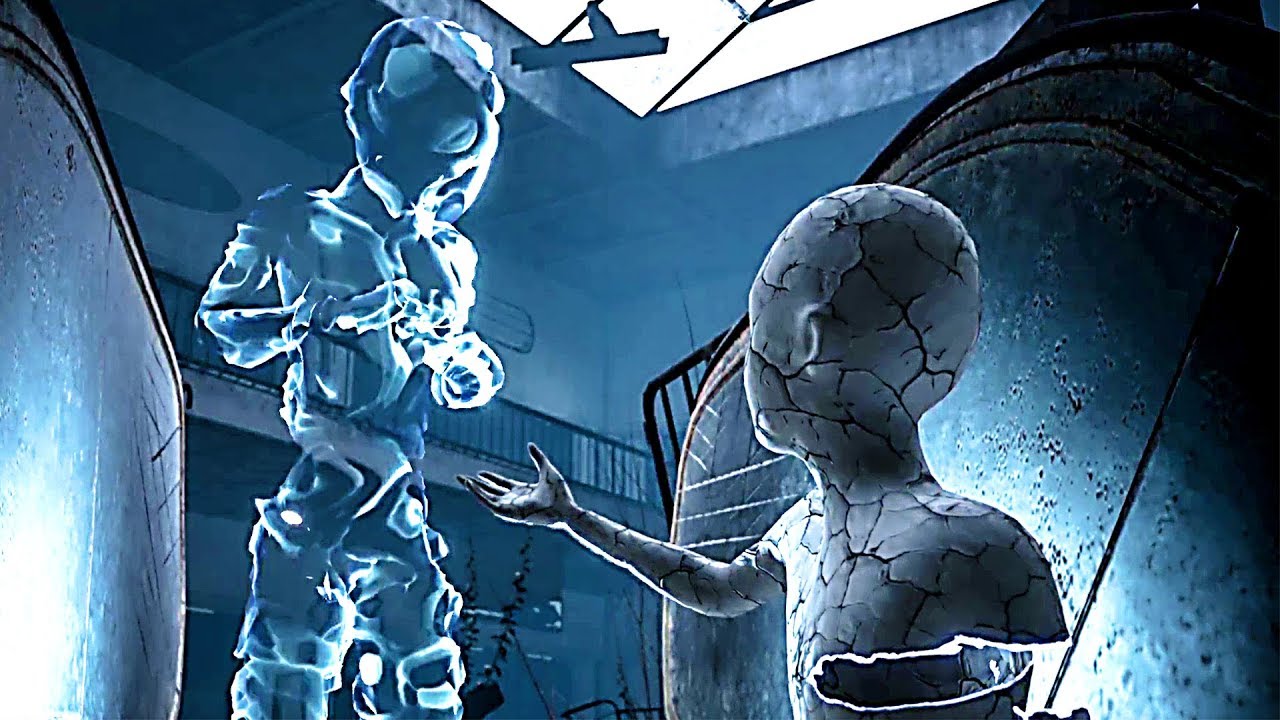Gaming has expanded throughout the years, and digital distribution has been a big aide in that respect. Last generation, Xbox Live Arcade and PSN helped indie developers bring smaller games to consoles, while Steam and other similar services have been a big help on PC. All of this has simply expanded and become more commonplace with the Xbox One, PlayStation 4 and Switch, and that certainly isn’t a bad thing. Indie developers have brought a lot of creativity to the industry and its marketplaces, not to mention a lot of choice, thanks to unique ideas, low overhead and smaller budgets. Hell, some of the best ones were developed by just one person.
Enter Montreal-based PLAYMIND and its debut game, The Inner Friend: an experimental experience that draws from the horror, platforming and puzzle genres. After debuting on PC a couple of years ago, it has now made its way to the Xbox One and PlayStation 4.
In many ways, The Inner Friend is the epitome of an indie game, and feels like the debut effort of a smaller studio. It’s an accomplishment and a step in the right direction, not to mention something to be proud of. After all, video games are not easy to make, and we sometimes forget that when we play them. Every title we enjoy, argue about or dislike was made by someone (or a group of someones) who had a vision and put effort and money into attempting to realize it in playable form. It does, however, lack some polish, and isn’t the type of thing that will have strong appeal for the average gamer who mostly sticks with triple A games, multiplayer titles and indies like Minecraft. Those who are willing to support a smaller developer and look outside the box may find something they’ll enjoy, though.
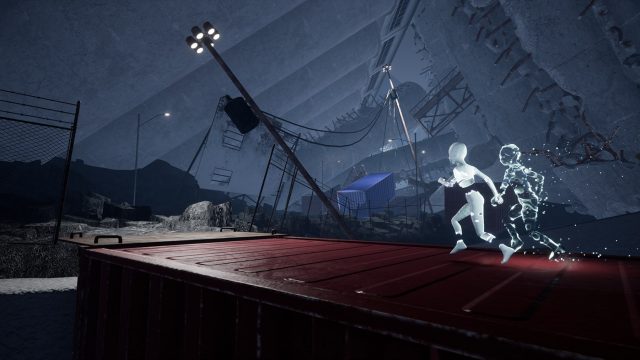
All of the above is relevant to this review and my time with this game, because PLAYMIND’s debut effort is something I respected more than I enjoyed. Don’t get me wrong: I didn’t think it was bad or dislike it; I simply appreciated the effort they put into it and the vision they had in mind more than I enjoyed playing the game itself. It has a purpose, tells a story and has some good ideas behind it, but it’s short and rough around the edges.
This one to one-and-a-half hour-long experience begins at the bed of a troubled older man, who is laying there naked and without any covers on. Don’t worry, though, as there are no private bits to be seen. Anyhow, a piece breaks off of this tormented man, and it goes back in time to face some of the fears and moments that defined his younger years, including trauma, family disputes and things that went bump in the night. The age old childhood fear of monsters, I mean.
As this broken and almost glowing childlike being, you’ll solve puzzles, avoid danger and use light platforming to get through different levels, few of which make much sense in linear thought. There’s a parking lot that seems to go on and on, an underground tunnel where a scary monster resides, a hospital full of sick and infectious people whose illness clouds must be avoided, and the expected school level where mean teachers are represented by distorted monsters. Then there’s the hair salon level, which is something you almost never see in a video game. This isn’t your typical beauty parlour, though, as it’s the salon from hell, and keeps going and going and going. There, you’ll be chased by a grotesque and naked creature whose head and face are obscured by a cluster of what looks like large grapes. Adding to the terror of this nightmarish beast is the fact that it wields scissors and is quite fast. To escape it, one must be even quicker and break many mirrors.
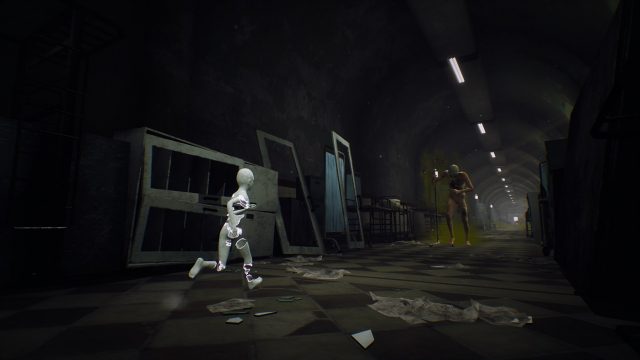
Don’t think of these environments as linear or nice looking places, because they aren’t. They’re hellish labyrinths with precarious puzzles, including ones where piles of books must be moved to block teachers’ vision, which is represented as lasers that hurt the children they pierce. Another level will force you to hold hands with a second child (who I assumed may be the main character’s brother or even younger self), in order to escort them through a dangerous environment that is full of pretty simple puzzles and a black and scary monster. The end of that level was particularly cute, and something I won’t quickly forget.
In-between most stages, you’ll return to the boy’s bedroom and see it fill with items and memories as he gets older. As you may have surmised, though, most of the more notable items only appear if you’ve found them while playing. These childhood possessions, posters and memories represent The Inner Friend‘s collectibles, and there are quite a few to be found. The game will reward you with an achievement or trophy for finding half, and then will reward you with another one if you locate them all. It will also do this for completing certain puzzles in a limited amount of steps, or without dying. Some are easier said than done, but the more ‘difficult’ ones just require additional thought.
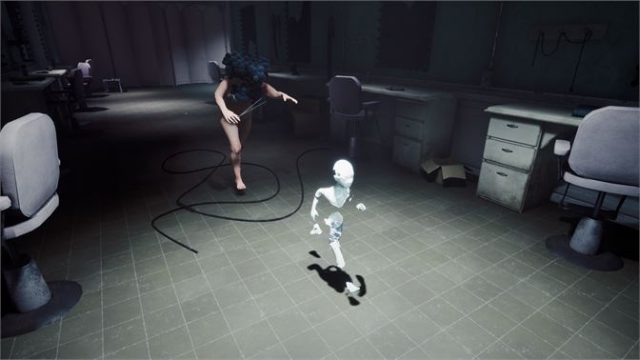
Very little of this game is linear or spelled out to the player, as almost all of it is surreal and abstract. Even the way you enter the next level (or traumatic memory, as you might want to think of them) is odd. A hole opens up in the boy’s bedroom, and you must walk through a tunnel that looks oddly similar to a woman’s reproductive system, before entering into a black abyss. Once there, you’ll fall through the sky and plummet towards white, square and rectangle shaped buildings, some of which have holes in their roofs. When you land on one, you can drop in and find the portal to the next stage.
Did I mention that these ‘buildings’ are floating in space? There’s that too.
Needless to say, The Inner Friend isn’t your typical video game, nor is it something that will appeal to everyone. It will, however, intrigue and entertain those who are willing to look outside of the box and enjoy something different; particularly something with scary elements. While this isn’t anywhere close to Alien Isolation, Dead Space or Outlast in terms of scares, there’s definitely an unsettling undertone to everything, and some moments get tense and creepy. I happen to be quite used to horror movies, scary books and creepy games, though, and didn’t find it to be all that scary. It is somewhat unique, but is also quite short in that it’s only about an hour to an hour-and-a-half long. You even lose your progress if you quit before finishing it the first time, which is odd. That said, once you beat the campaign once, you’ll be able to go back to certain stages through a chapter select menu.
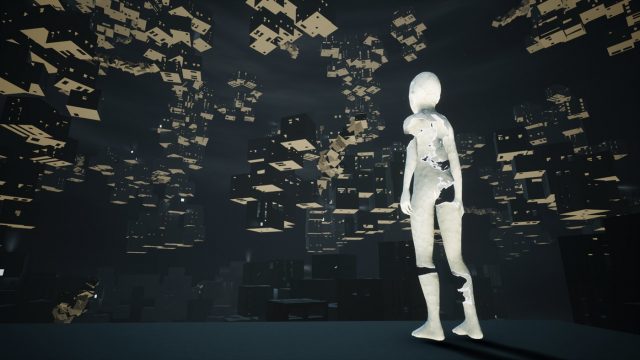
Visually, this first effort is basic but surreal at the same time. Its colour palette makes good use of light and dark shades, and it isn’t afraid of using a sterile, black and stark white look. The main character is also designed to look like a broken, illuminated mannequin. He lacks definition, and isn’t complete.
Moving on, the sound is similarly abstract and surreal, but manages to deliver an unsettling atmosphere and keep you on the edge of your toes. There is no dialogue, so that helps with this aesthetic. You can, however, call out to your friend if he or she gets lost and needs to come to you. Generally speaking, though, the AI is pretty good at following once you’ve put platforms down for it to walk across.
At the end of the day, this is an ambitious project that uses a mix of surrealism, outside-the-box thinking and the abstract to deliver an interesting interactive experience, albeit one that is a bit rough and occasionally dry. PLAYMIND deserves respect for what they’ve managed to do with The Inner Friend, and I look forward to seeing what’s next from them. That said, I appreciated the effort and ideas behind this game more than I enjoyed playing it, and don’t think I’ll ever play through it again despite its brevity.
It’s also a bit steep for what it is, at almost $20 Canadian.
This review is based on the Xbox One version of the game, which we were provided with.

